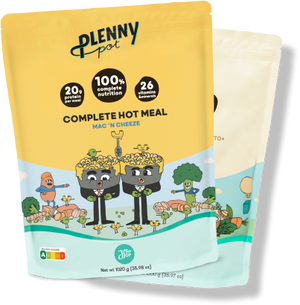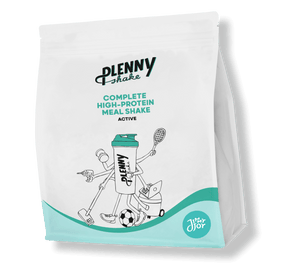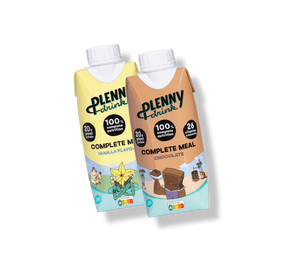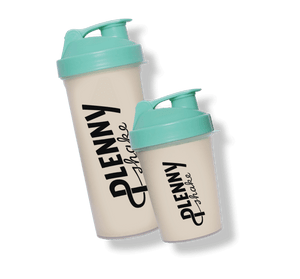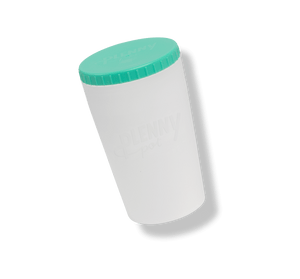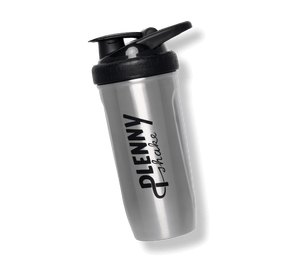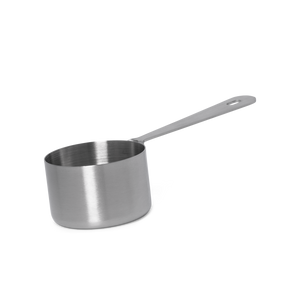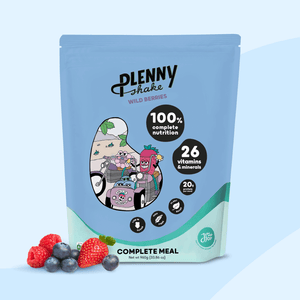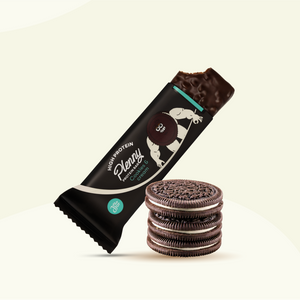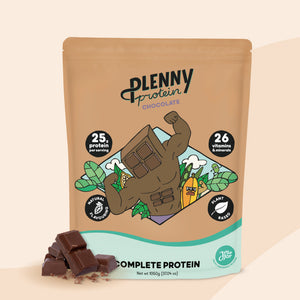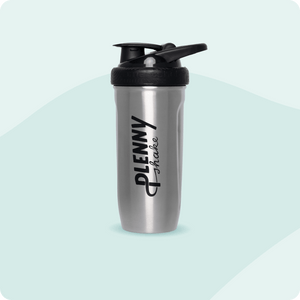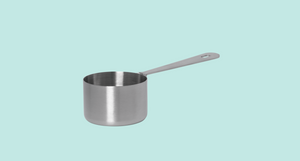
Our mission of creating the healthiest meal scientifically possible never stops! After a lot of hard work, we accomplished this mission by providing you with an even healthier and tastier Plenny Shake v3.0.
Jimmy Joy’s meals are complete and vegan, using plant-based ingredients blended with real fruit to ensure it is as delicious as it is nutritious.
Want to find out more about the changes we made to the formula? This blog will tell you all about it!
TL; DR:
- 36% less sugar content
- Replaced maltodextrin to rice flour
- Added choline
- Added probiotics
- Improved micronutrient profile
- Increased bag size from 5 to 10 meals
Plenny Shake 2.1 vs 3.0 nutritional info
|
Plenny Shake |
v2.1 |
v3.0 |
|
|
Per portion |
Per portion |
|
Energy kJ |
1673.6 |
1673.5 |
|
Kcal |
400.0 |
400.0 |
|
Fat |
14 |
15 |
|
from which saturated |
2.1 |
2.3 |
|
Monounsaturated fats |
5.1 |
5.5 |
|
Polyunsaturated fats |
6.5 |
6.8 |
|
Carbohydrates |
45 |
43 |
|
Sugars |
5.0 |
3.2 |
|
Fiber |
8.1 |
8.2 |
|
Protein |
20.0 |
20.2 |
|
Salt |
0.28 |
0.30 |
Our new and improved Plenny Shake 3.0
36% less sugar content
Yesss, in the Plenny Shake v3.0 we managed to have even less sugars (which are just empty calories) without losing the amazing Plenny taste! Because of the naturally high-fiber and low-sugar content present in oats, we added more of this healthy ingredient together with rice flour, making it possible to fully replace maltodextrin and therefore reach a lower in sugar content.
Added choline
We wanted to add extra functional benefits to our products, for which we dug into the best ingredients out there and decided to add choline.
The body needs choline to synthesize two major phospholipids vital for cell membranes and to produce acetylcholine, which is an important neurotransmitter for memory, mood, muscle control, and other brain and nervous system functions. [1-3] Choline deficiency can cause muscle damage, liver damage, and nonalcoholic fatty liver disease (1,2, 4, 5).
We can synthesize choline in our liver, but this is not sufficient to meet our needs [4]. Therefore we also need to obtain choline from the diet. Let us help you with that!
We added Choline Hydrogen Tartrate, which is the same as Choline Bitartrate. One portion of Plenny Shake v3.0 provides 110mg, which is already 28% of the adequate intake of 400mg/day.
We added probiotics
Probiotics have the ability to possibly enhance and strengthen our gut microbiome. Because of the high fiber content in Plenny Shakes, they have a symbiotic effect, meaning that probiotics become more resistant and provide a stronger health effect thanks to the fibers which they eat and live from, so basically one ingredient strengthens the other one, sweet right? (6)
There are different types of probotic (or live culture) species, from which we decided to add 500 million cultures of Bacillus Coagulans UABc-20 per meal.
Improved micronutrient profile
Back in the days there was not so much knowledge on Upper Limits (UL), which are amounts not to exceed in intake of vitamins. You would think that the more vitamins, the better, but this is however not the case. Your body needs to process all the vitamins and especially your kidneys are having a hard time excreting these overdoses of vitamins. Vitamin transport proteins are filtered in renal glomeruli and subsequently reabsorbed in the proximal tubules. (7) Exceeding the Upper Limit of vitamins can cause health problems such as hypercalcemia, kidney disorders, renal insufficiency, gastrointestinal tract disorders, arterial hypertension (vitamin D), flushing (vitamin B3), constipation (iron or calcium) or intestinal bleeding (iron), which we take thoroughly into consideration and monitor when formulating our products. (8,9)
Active absorption of vitamin B12
Our latest findings on the absorption rate of vitamin B12 made us more curious and after researching further we’ve found out that there can be a saturation in the absorption mechanism of the vitamin. Active absorption is severely limited. Studies state that the absorption efficiency of B12 is lower when high B12 content is higher. (10) They showed that the absorption of B12 varies from about 56%, if about 1 microgram or less is consumed, to about 1.3% for doses of 1000 micrograms (1 milligram) or above.
Studies specifically done in cyanocobalamin, estimated the absorptive capacity of cyanocobalamin as 49% and another study as 1.5–2.5 μg per meal, which depends on the maximum saturation of the intestine receptors. This is why we decided to lower the amounts added but of course, making sure that the daily needs and requirements are met. (11-15) In persons with normal absorption, an intake of 4–7 ug of vitamin B12 a day is associated with an adequate vitamin B12 status. (16)
Reviews from EFSA conclude that supplements available on the market usually contain dosages between 1-5 µg. (17) An appropriate overdosing based on the bioavailability of different vitamin forms is 2-4 times more than the established adequate intake (which is 4ug for B12) without exceeding any upper limits if established.
The National Centre for Biotechnology Information states that cyanocobalamin losses in urine have been observed to be 3 times higher than that of methylcobalamin. Although absorption in the blood of both B12 forms was similar, it was found that methylcobalamin supplementation caused 13% more cobalamin to be stored in the liver than did cyanocobalamin supplementation. (17-19)
We opt for cyanocobalamin produced through fermentation due to its suitability for our intended use, and taking into account the previous, at 4 times higher than the daily recommended intakes.
Therefore, in one portion of Plenny Shake you can find 3,2ug of vitamin B12, which accounts to 128% of the daily recommended intake. Sufficiently enough, don't you think?
As of the micronutrients appearing to a lesser extent, their absorption and high bioavailability was taken further into account, reason to which the amounts were reduced whilst still meeting the necessary daily recommendations.
Vitamin E, D
Because of its antioxidant capacity and potential to aid in the preservation of our products, Vitamin E was increased. Vitamin D is slightly increased to counteract the possible absence of sunlight one might have. The main activator for the production and uptake of this vitamin is the exposure to sunlight.
Chloride and Selenium
Chloride is also increased because of its technical functionality, this mineral is being used as a premix to carry Potassium and Chromium, and in order to meet the ideal amounts of those minerals, Chloride was increased. Another increased mineral is Selenium, in order to meet the latest adequate intake established by EFSA of 70ug/day. (20)
Increased
- Vitamin D
- Vitamin E
- Chloride
- Selenium
Plenny Shake 2.1 vs 3.0 vitamins and minerals
|
Plenny Shake |
|
V2.1 |
V3.0 |
||
|
Vitamins-Minerals |
Unit |
Per portion |
RI* (%) |
Per portion |
RI * (%) |
|
Vitamin A |
μg |
160 |
20%* |
160 |
20%* |
|
Vitamin D |
μg |
3.0 |
60%* |
5.0 |
100%* |
|
Vitamin E |
mg |
2.4 |
20%* |
4.0 |
33%* |
|
Vitamin K |
μg |
16 |
21%* |
16 |
21%* |
|
Vitamin C |
mg |
40 |
50%* |
30 |
38%* |
|
Thiamin |
mg |
0.2 |
20%* |
0.4 |
36%* |
|
Riboflavin |
mg |
0.3 |
23%* |
0.3 |
23%* |
|
Niacin |
mg |
3.6 |
23%* |
3.6 |
23%* |
|
Vitamin B6 |
mg |
0.3 |
22%* |
0.4 |
29%* |
|
Folic Acid |
μg |
60 |
30%* |
60 |
30%* |
|
Vitamin B12 |
μg |
28 |
1120%* |
3.2 |
128%* |
|
Biotin |
μg |
10 |
20%* |
10 |
20%* |
|
Pantothenic acid |
mg |
1.2 |
20%* |
1.2 |
20%* |
|
Potassium |
mg |
400 |
20%* |
400 |
20%* |
|
Chloride |
mg |
160 |
20%* |
279 |
35%* |
|
Calcium |
mg |
185 |
23%* |
185 |
23%* |
|
Phosphorus |
mg |
140 |
20%* |
140 |
20%* |
|
Magnesium |
mg |
75 |
20%* |
75 |
20%* |
|
Iron |
mg |
3.2 |
23%* |
3.2 |
23%* |
|
Zinc |
mg |
2.0 |
20%* |
2.0 |
20%* |
|
Copper |
mg |
0.2 |
20%* |
0.4 |
40%* |
|
Manganese |
mg |
0.4 |
20%* |
1.0 |
50%* |
|
Selenium |
μg |
11 |
20%* |
18 |
33%* |
|
Chromium |
μg |
8.0 |
20%* |
8.0 |
20%* |
|
Molybdenum |
μg |
13 |
26%* |
13 |
26%* |
|
Iodine |
μg |
30 |
20%* |
30 |
20%* |
* % of the daily reference intake (RI) for vitamins and minerals.
Try the new formula now and let us know what you think!

 Everything You Need In One Meal
Everything You Need In One Meal
 Stay Full For 3-5 Hours
Stay Full For 3-5 Hours
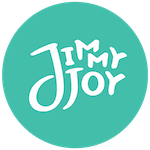






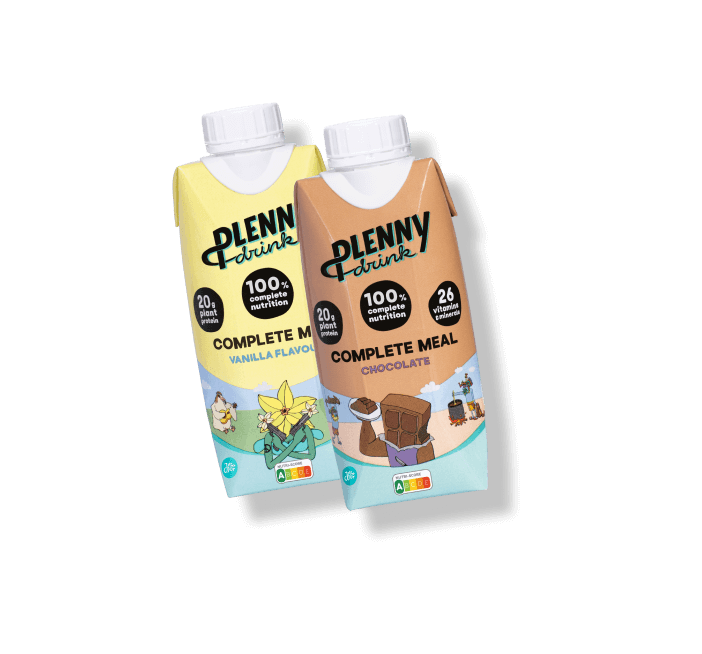












 Product added to cart
Product added to cart



